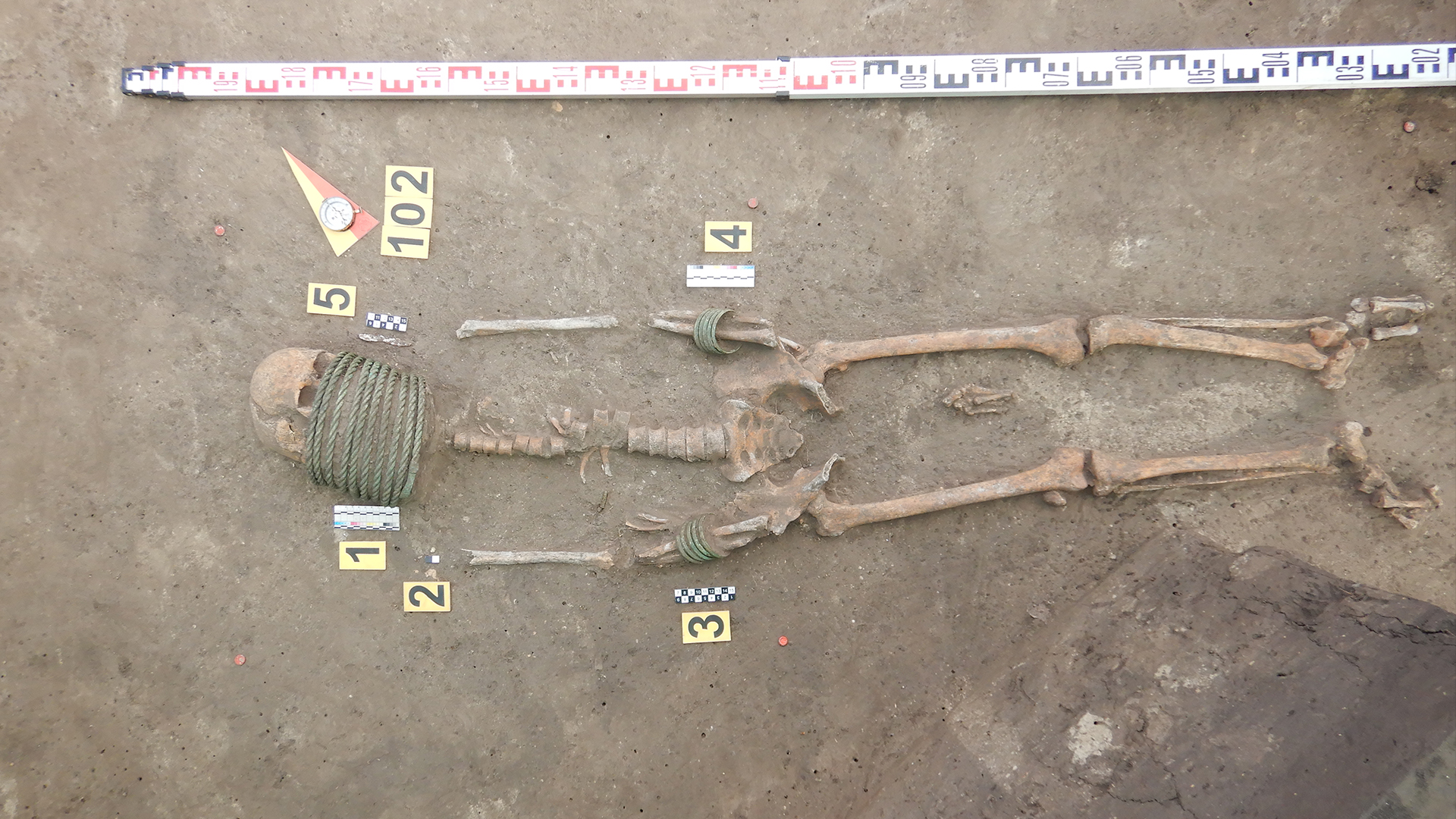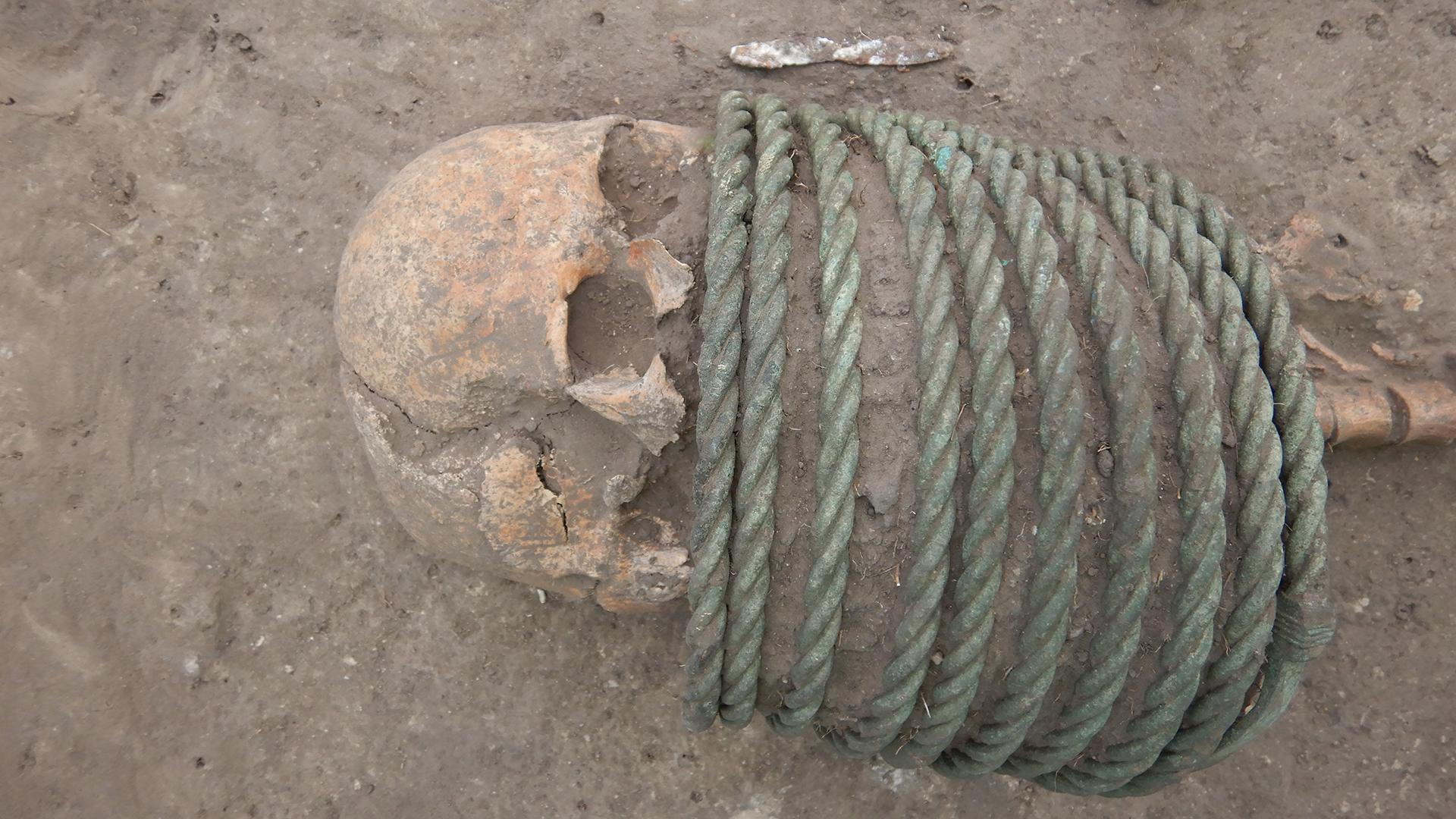1,000-year-old cemetery with dead wearing dramatic rings on their necks and buckets on their feet found in Ukraine
The discovery of a cemetery in Ukraine from a millennium ago has revealed axes, swords, jewelry and, unexpectedly, buckets around the feet of some of the dead.

Archaeologists in Ukraine have discovered a 1,000-year-old cemetery whose dead were buried with weapons, jewelry and, curiously, buckets around some of their feet.
The 11th-century cemetery is located about 50 miles (80 kilometers) south of Kyiv. Of its 107 graves, "most of the identified burials were deposed in wooden coffins," Vsevolod Ivakin and Vyacheslav Baranov, both archaeologists at the National Academy of Sciences of Ukraine, wrote in a paper they presented at the annual meeting of the Archaeological Institute of America, which was held Jan. 4-7 in Chicago.
The cemetery's dead include both men and women. Some of the men were buried with weapons, such as axes, spearheads and swords, Ivakin and Baranov wrote. A few of the women were buried with elaborate neck rings, which "are found only on necks in female burials and were apparently a kind of social marker," in this region at the time, Baranov told Live Science in an email. Some of the people were buried with wooden buckets at their feet, which may have been part of funerary rituals. Other sites that have buckets within burials have been found in the region.
Related: Russian forces reportedly stole priceless Scythian treasures from Ukrainian museum
The archaeologists also found a stone altar, as well as bracelets, beads and the remains of food offerings, such as chicken bones and eggshells, among other artifacts. The altar could have been used for Christian or pagan rituals, or possibly both.
Some of the artifacts are similar to those found in the Baltic, hinting that some of the people buried in the cemetery might have come from that region to serve in the militaries of the rulers of Kyiv, such as Volodymyr the Great (who reigned from 980 to 1015) and Yaroslav the Wise (who reigned from 1019 to 1054), the archaeologists noted. The territories that Volodymyr the Great ruled stretched to the Baltic region.
At the time the cemetery was in use, people in Ukraine were converting to Christianity, the researchers said. This included Volodymyr the Great, who left behind his pagan roots and was baptized around 987 before his marriage to Anna, the sister of the Byzantine emperor Basil II.
Get the world’s most fascinating discoveries delivered straight to your inbox.
The researchers excavated the cemetery between 2017 and 2022. The ongoing Russian invasion of Ukraine, however, has paused many excavations in Ukraine, including this one, the archaeologists said.

Owen Jarus is a regular contributor to Live Science who writes about archaeology and humans' past. He has also written for The Independent (UK), The Canadian Press (CP) and The Associated Press (AP), among others. Owen has a bachelor of arts degree from the University of Toronto and a journalism degree from Ryerson University.
 Live Science Plus
Live Science Plus








